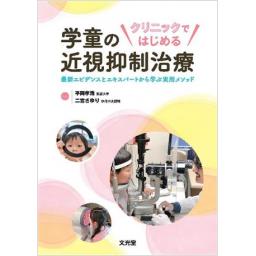1) 文部科学省 : 「裸眼視力1.0未満の者」の割合の推移. 令和元年度学校保健統計調査 (学校保健統計調査報告書) の公表について (https://www.mext.go.jp/content/202000325-mxt_chousa01-20200325104819_1-1-1.pdf) (2021年3月31日閲覧)
2) Yotsukura E, et al : Current prevalence of myopia and association of myopia with environmental factors among schoolchildren in Japan. JAMA Ophthalmol 137 : 1233-1239, 2019
3) Ueda E, et al : Trends in the prevalence of myopia and myopic maculopathy in a Japanese population : The Hisayama Study. Invest Ophthalmol Vis Sci 60 : 2781-2786, 2019
4) Dolgin E : The myopia boom. Nature 519 : 276-278, 2015
5) Vitale S, et al : Increased prevalence of myopia in the United States between 1971-1972 and 1999-2004. Arch Ophthalmol 127 : 1632-1639, 2009
6) Holden BA, et al : Global prevalence of myopia and high myopia and temporal trends from 2000 through 2050. Ophthalmology 123 : 1036-1042, 2016
7) 坪田一男ほか : 「新型コロナウイルスによって変化した子どもの生活実態」に関する調査. PRTIMES, 2020 (https://prtimes.jp/main/html/rd/p/000000002.000060256.html) (2021年3月31日閲覧)
8) Wolffsohn JS, et al : IMI-Myopia control reports overview and introduction. Invest Ophthalmol Vis Sci 60 : M1-M19, 2019
9) Fan DS, et al : Prevalence, incidence, and progression of myopia of school children in Hong Kong. Invest Ophthalmol Vis Sci 45 : 1071-1075, 2004
10) Matsumura H, et al : Prevalence of myopia and refractive changes in students from 3 to 17 years of age. Surv Ophthalmol 44 : S109-S115, 1999
11) Mutti DO, et al : Refractive error, axial length, and relative peripheral refractive error before and after the onset of myopia. Invest Ophthalmol Vis Sci 48 : 2510-2519, 2007
12) Donovan L, et al : Myopia progression rates in urban children wearing single-vision spectacles. Optom Vis Sci 89 : 27-32, 2012
13) Kanda H, et al : Effect of spectacle lenses designed to reduce relative peripheral hyperopia on myopia progression in Japanese children : a 2-year multicenter randomized controlled trial. Jpn J Ophthalmol 62 : 537-543, 2018
14) Zadnik K, et al : Prediction of juvenile onset myopia. JAMA Ophthalmol 133 : 683-689, 2015
15) Chua SY, et al : Age of onset of myopia predicts risk of high myopia in later childhood in myopic Singapore children. Ophthalmic Physiol Opt 36 : 388-394, 2016
16) Haarman AEG, et al : The complications of myopia : a review and meta-analysis. Invest Ophthalmol Vis Sci 61 : 49, 2020
